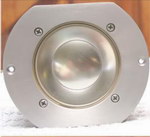Hello All,
I recently acquired some L166 and L56 speakers. Both needed re-foaming, but the L56's were good enough to try first. (I already have another working pair of L166's that I have had since ~1976) I thought they sounded dead and then after some internet searching see a few complaints about this issue.
While I was re-foaming I did some searching and found schematics of the crossover networks for both speakers. I put the schematics into LTSpiceIV. The response of the L166 crossover looked as I would have expected, BUT boy was I surprised with what I saw for the L56 network! The L56 circuit has a huge notch (-40 dB) at 1.34 kHz. This is due to a series LC (L3 and C5) at the tweeter terminals of the crossover. Along with the notch comes a large jump in phase at the notch frequency as the circuit changes from inductive to capacitive with increasing frequency.
I didn't find any discussion of this behavior when searching. I am wondering if anyone knows what JBL engineering might have been thinking when they put this network there??? Is it possible the speaker response has a huge spike they were trying to counter?
Anyway, I decided to remove this network and listen... I cut the L3 inductor wire at the connection to the positive tweeter terminal. (You can always solder it back) The response in LtSpice looks far more normal when modelling this. I listened for hours after this, and feel they no longer have a void in the middle. Please let me know if anyone else agrees. I did not notice any "peaking" that JBL may have been trying to notch either. I am leaving my speakers with the LC removed.
Please let me know if anyone knows a reason for this series LC being there. I can send frequency response plots and/or LTSpice schematic files to anyone interested.
thanks,
Ed



 Reply With Quote
Reply With Quote


